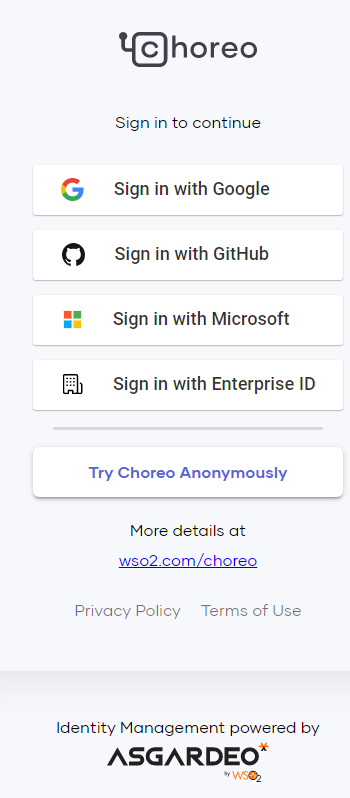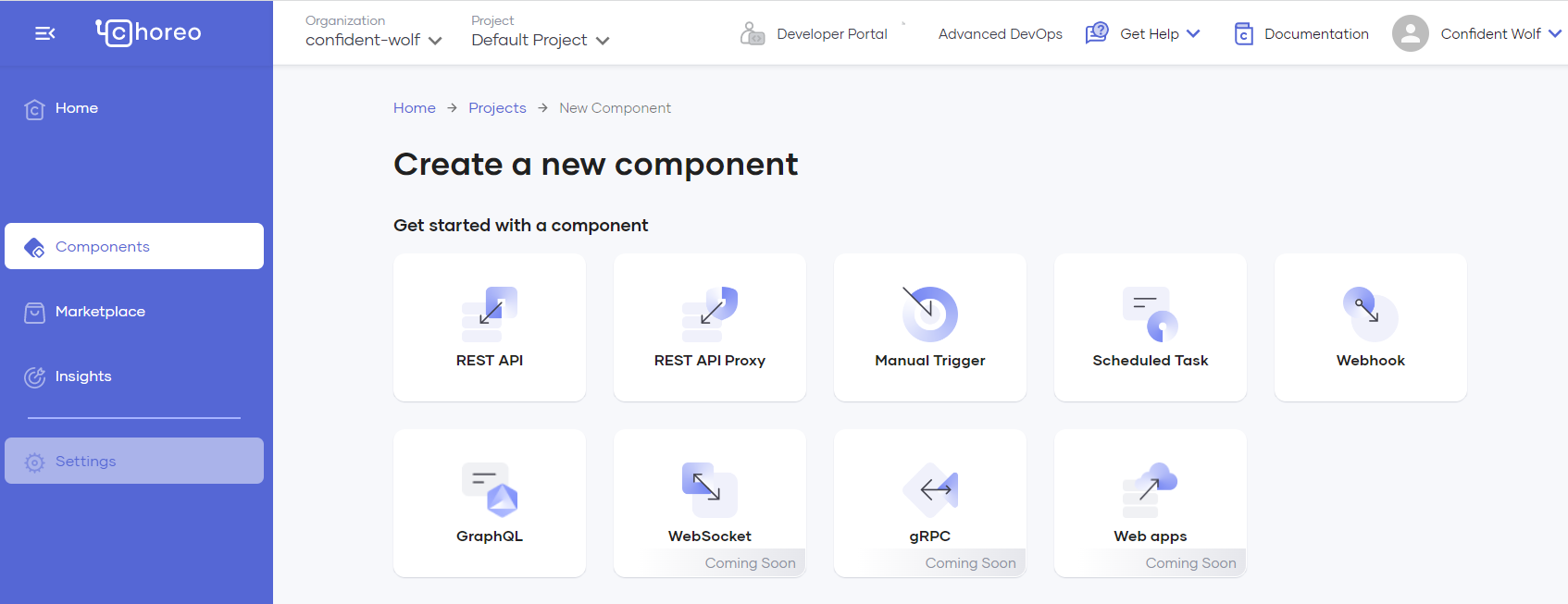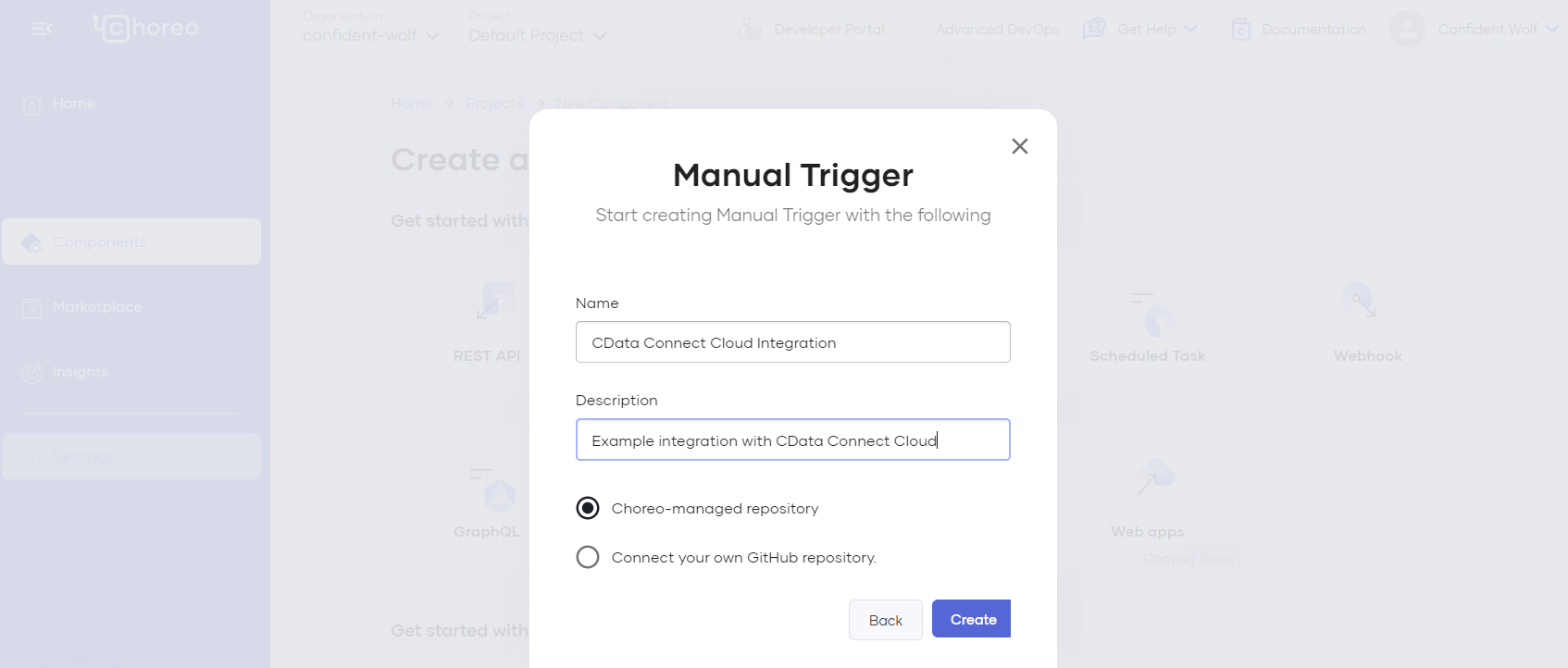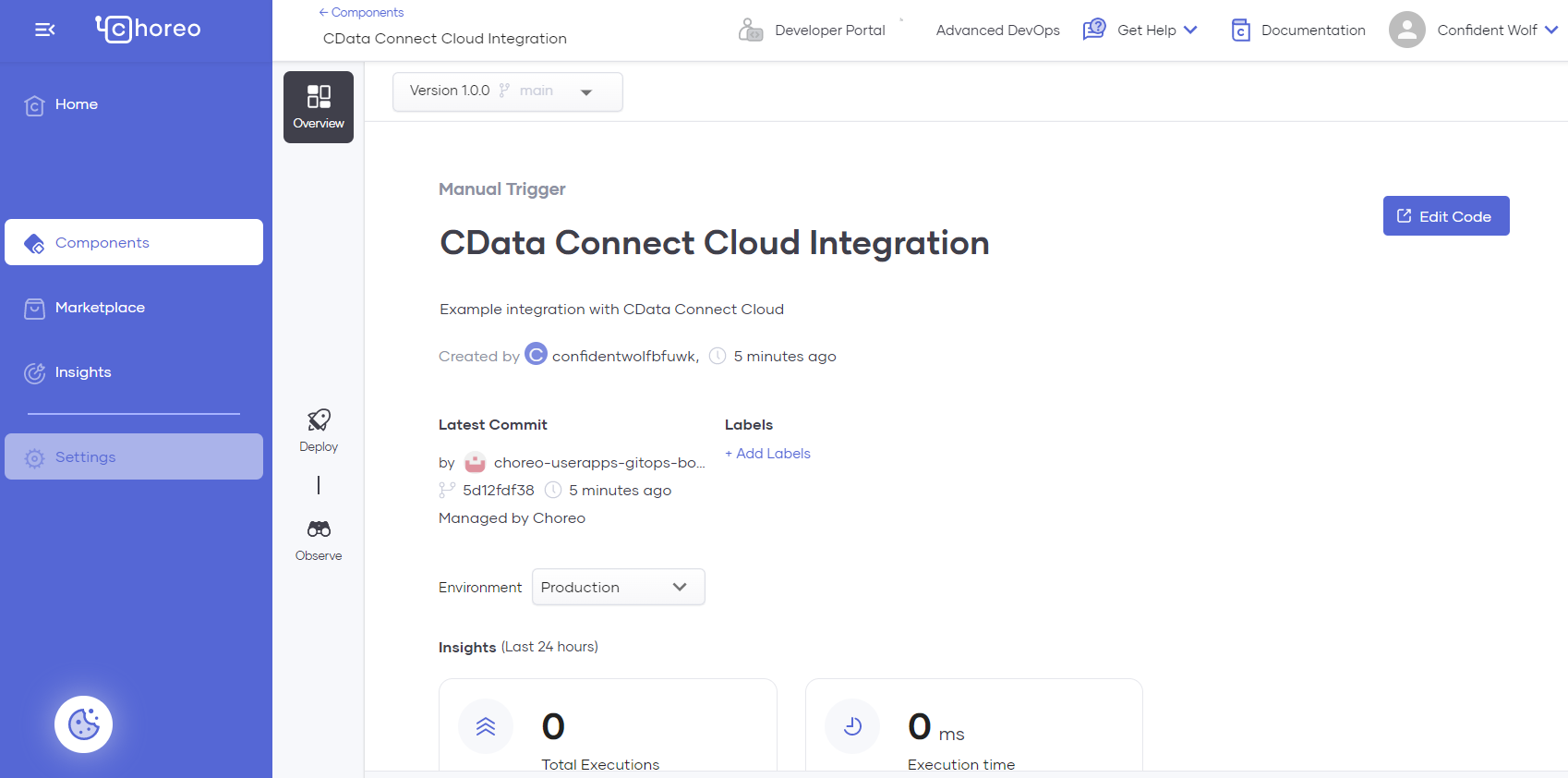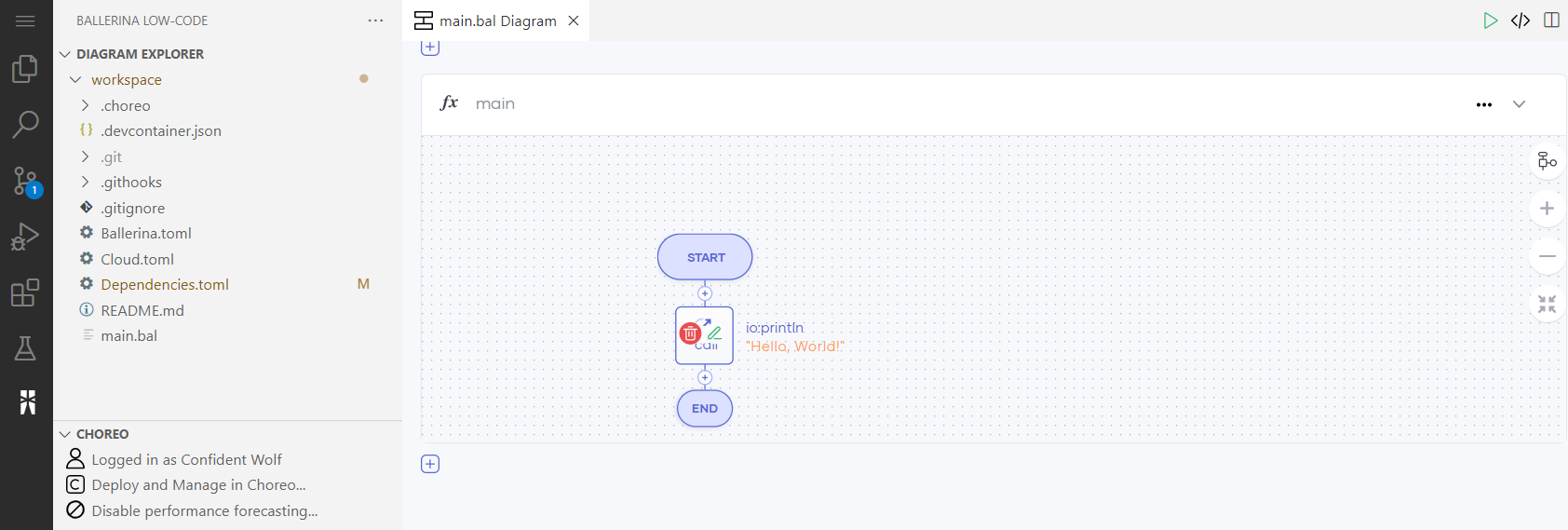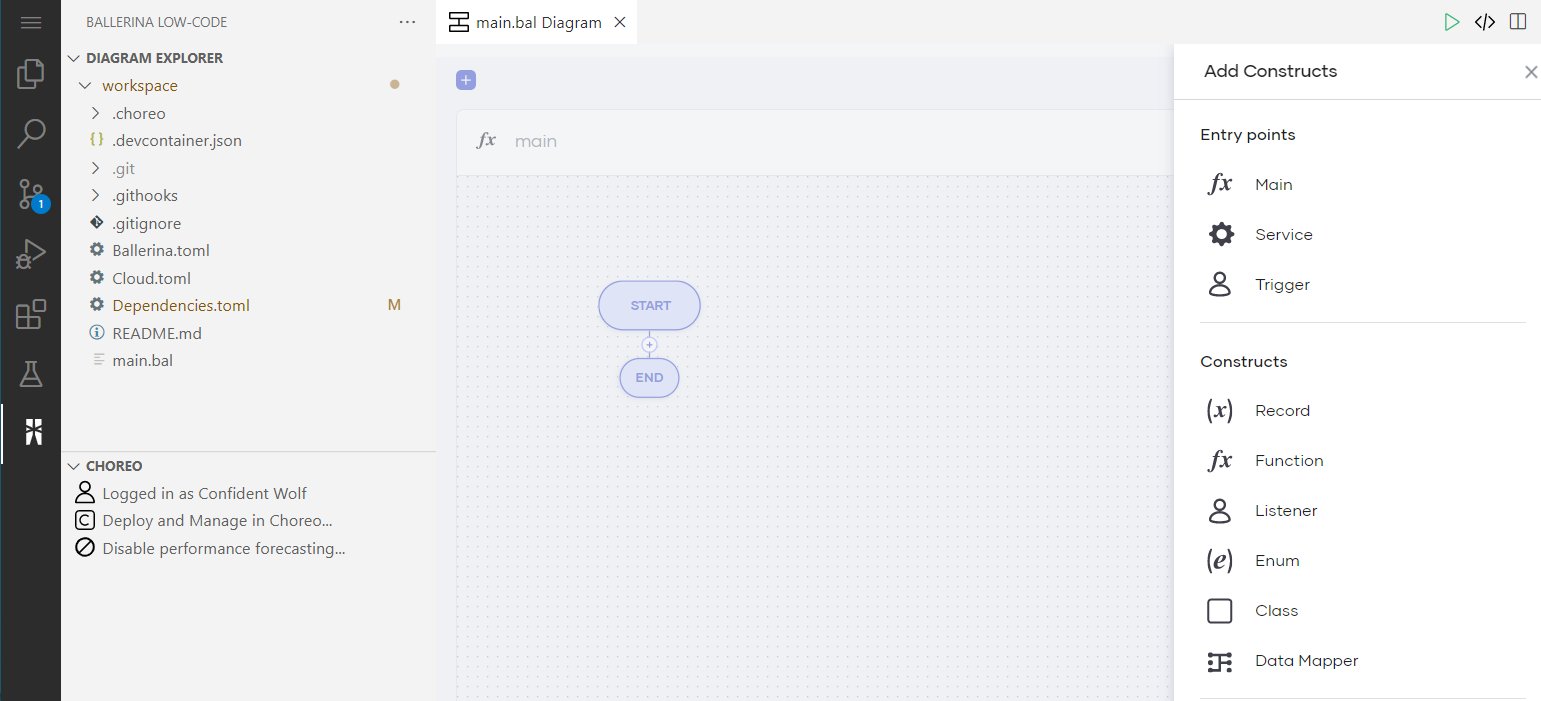Discover how a bimodal integration strategy can address the major data management challenges facing your organization today.
Get the Report →Build Zuora-Connected Apps in Choreo
Use CData Connect Cloud to connect to Zuora Data from Choreo and build custom apps using live Zuora data.
The Choreo platform from WS02 is a versatile platform designed for low-code and cloud-native engineering. Developers, even those without advanced coding skills, can leverage Choreo's user-friendly low-code environment to simplify application development. When combined with CData Connect Cloud, users gain immediate cloud-to-cloud access to Zuora data for applications. This article details the process of connecting to Zuora using Connect Cloud and building an application with real-time access to Zuora data within Choreo.
CData Connect Cloud delivers a pure cloud-to-cloud interface for Zuora, enabling you to construct applications within Choreo that utilize live Zuora data data, all without the need for data replication to a natively supported database. With its built-in optimized data processing capabilities, CData Connect Cloud efficiently directs all supported SQL operations, including filters and JOINs, directly to Zuora, capitalizing on server-side processing to swiftly provide the requested Zuora data.
Configure Zuora Connectivity for Choreo
Connectivity to Zuora from Choreo is made possible through CData Connect Cloud. To work with Zuora data from Choreo, we start by creating and configuring a Zuora connection.
- Log into Connect Cloud, click Connections and click Add Connection
![Adding a Connection]()
- Select "Zuora" from the Add Connection panel
![Selecting a data source]()
-
Enter the necessary authentication properties to connect to Zuora.
Zuora uses the OAuth standard to authenticate users. See the online Help documentation for a full OAuth authentication guide.
Configuring Tenant property
In order to create a valid connection with the provider you need to choose one of the Tenant values (USProduction by default) which matches your account configuration. The following is a list with the available options:
- USProduction: Requests sent to https://rest.zuora.com.
- USAPISandbox: Requests sent to https://rest.apisandbox.zuora.com"
- USPerformanceTest: Requests sent to https://rest.pt1.zuora.com"
- EUProduction: Requests sent to https://rest.eu.zuora.com"
- EUSandbox: Requests sent to https://rest.sandbox.eu.zuora.com"
Selecting a Zuora Service
Two Zuora services are available: Data Query and AQuA API. By default ZuoraService is set to AQuADataExport.
DataQuery
The Data Query feature enables you to export data from your Zuora tenant by performing asynchronous, read-only SQL queries. We recommend to use this service for quick lightweight SQL queries.
Limitations- The maximum number of input records per table after filters have been applied: 1,000,000
- The maximum number of output records: 100,000
- The maximum number of simultaneous queries submitted for execution per tenant: 5
- The maximum number of queued queries submitted for execution after reaching the limitation of simultaneous queries per tenant: 10
- The maximum processing time for each query in hours: 1
- The maximum size of memory allocated to each query in GB: 2
- The maximum number of indices when using Index Join, in other words, the maximum number of records being returned by the left table based on the unique value used in the WHERE clause when using Index Join: 20,000
AQuADataExport
AQuA API export is designed to export all the records for all the objects ( tables ). AQuA query jobs have the following limitations:
Limitations- If a query in an AQuA job is executed longer than 8 hours, this job will be killed automatically.
- The killed AQuA job can be retried three times before returned as failed.
![Configuring a connection (Salesforce is shown)]()
- Click Create & Test
- Navigate to the Permissions tab in the Add Zuora Connection page and update the User-based permissions.
![Updating permissions]()
Add a Personal Access Token
If you are connecting from a service, application, platform, or framework that does not support OAuth authentication, you can create a Personal Access Token (PAT) to use for authentication. Best practices would dictate that you create a separate PAT for each service, to maintain granularity of access.
- Click on your username at the top right of the Connect Cloud app and click User Profile.
- On the User Profile page, scroll down to the Personal Access Tokens section and click Create PAT.
- Give your PAT a name and click Create.
![Creating a new PAT]()
- The personal access token is only visible at creation, so be sure to copy it and store it securely for future use.
With the connection configured, you are ready to connect to Zuora data from Choreo.
Connect to Zuora from Choreo
The steps below outline connecting to CData Connect Cloud from Choreo to create a new application with access to live Zuora data.
Creating a Construct
-
Sign in to the Choreo platform. Note: This article is from the perspective of an Anonymous user.
![Displaying Choreo landing page]()
-
Select Components from the left sidebar and then click +Create. Next, choose Manual Trigger and then Start from scratch.
![Selecting manual trigger]()
-
Give the manual trigger a Name and Description and click Create.
![Creating manual trigger]()
-
After the trigger is created, click on Edit Code.
![Clicking Edit Code]()
-
The Ballerina Low-Code IDE is displayed. Choreo automatically generates a construct in the low-code diagram
view. Delete this construct by highlighting it and clicking on the trashcan icon.
![Showing Ballerina Low-Code IDE]()
-
Click the + icon towards the top of the screen and select Main from the Add Constructs
toolbar on the right. In the following Function Configuration form, click Save.
![Adding a Construct]()
Adding the CData Connect Cloud Connector
- Click the + icon between the Start and End ellipses and click Connector.
- In the Connectors sidebar on the right, search for "CData". Click CData Connect to open the Connector settings pane.
-
In the Connector settings pane, enter the configuration settings:
- Enter an Endpoint Name for your use. In this example, we use "connectEndpoint".
- In the User field, enter the email address of the CData Connect Cloud user, wrapped in quotation marks (for example, "[email protected]").
- In the Password field, enter the PAT you generated earlier, wrapped in quotation marks (for example, "SampleToken").
- After clicking Save, the low-code editor appears with the CData Connect Cloud logo.
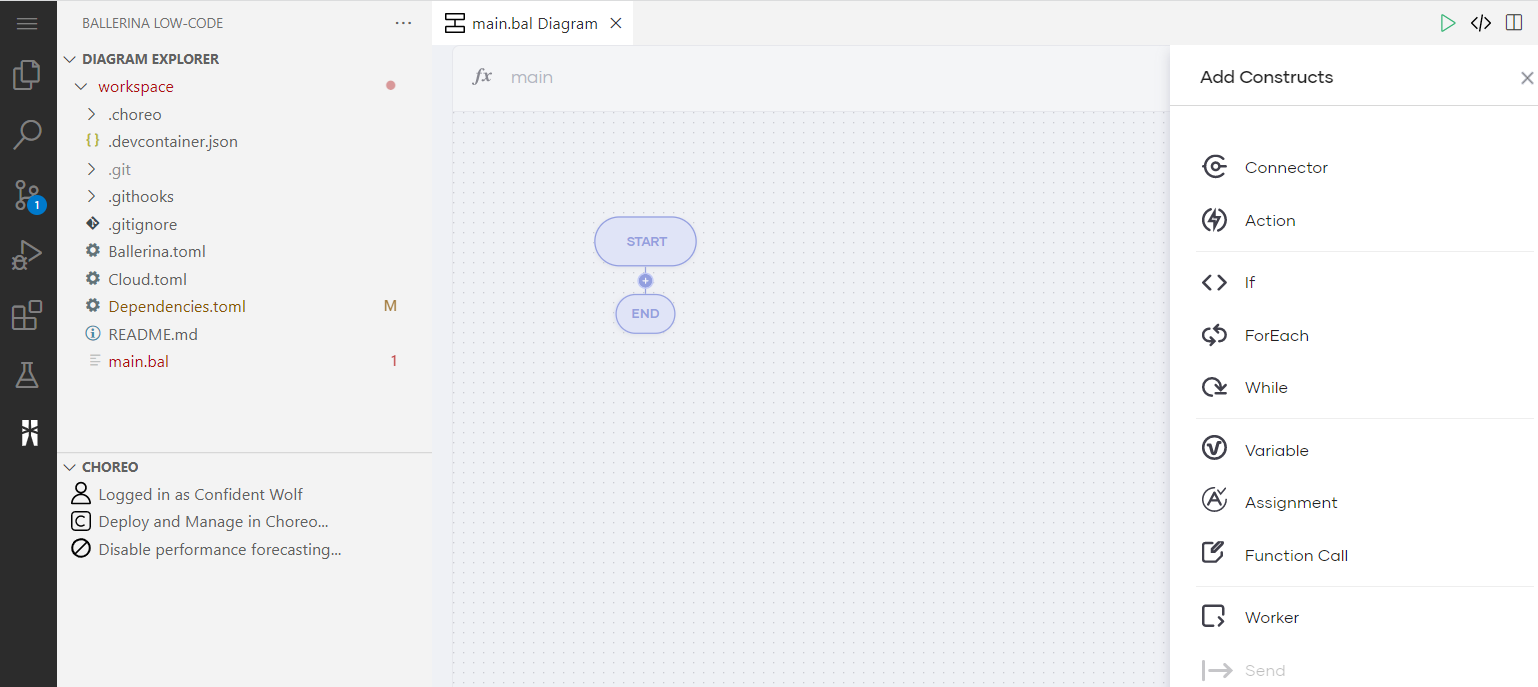
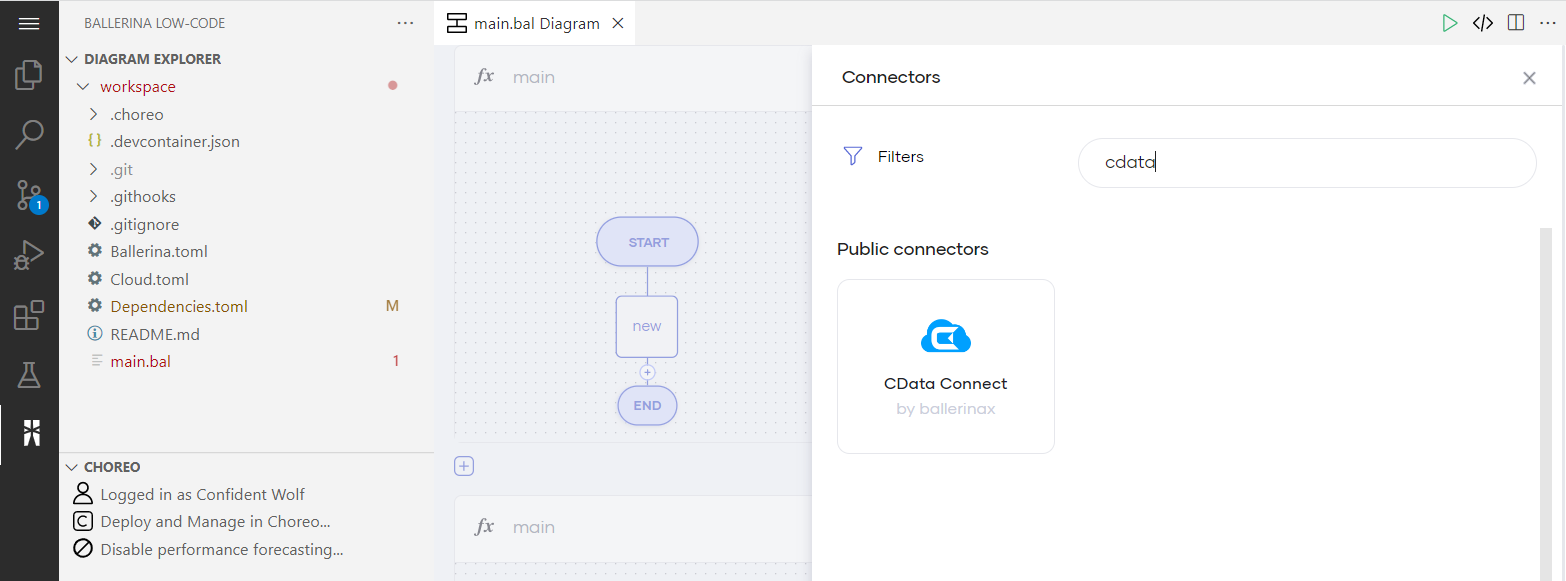
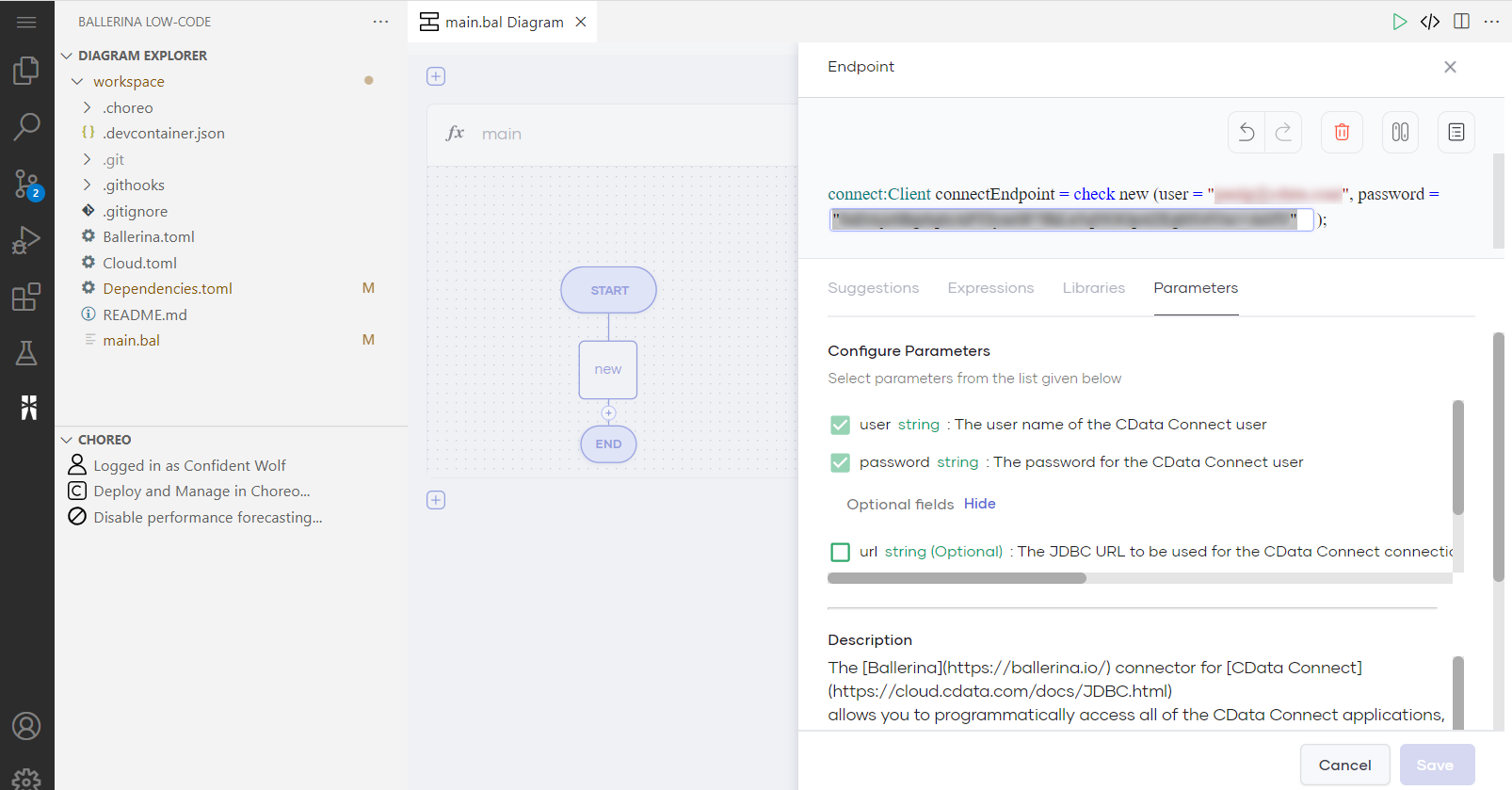
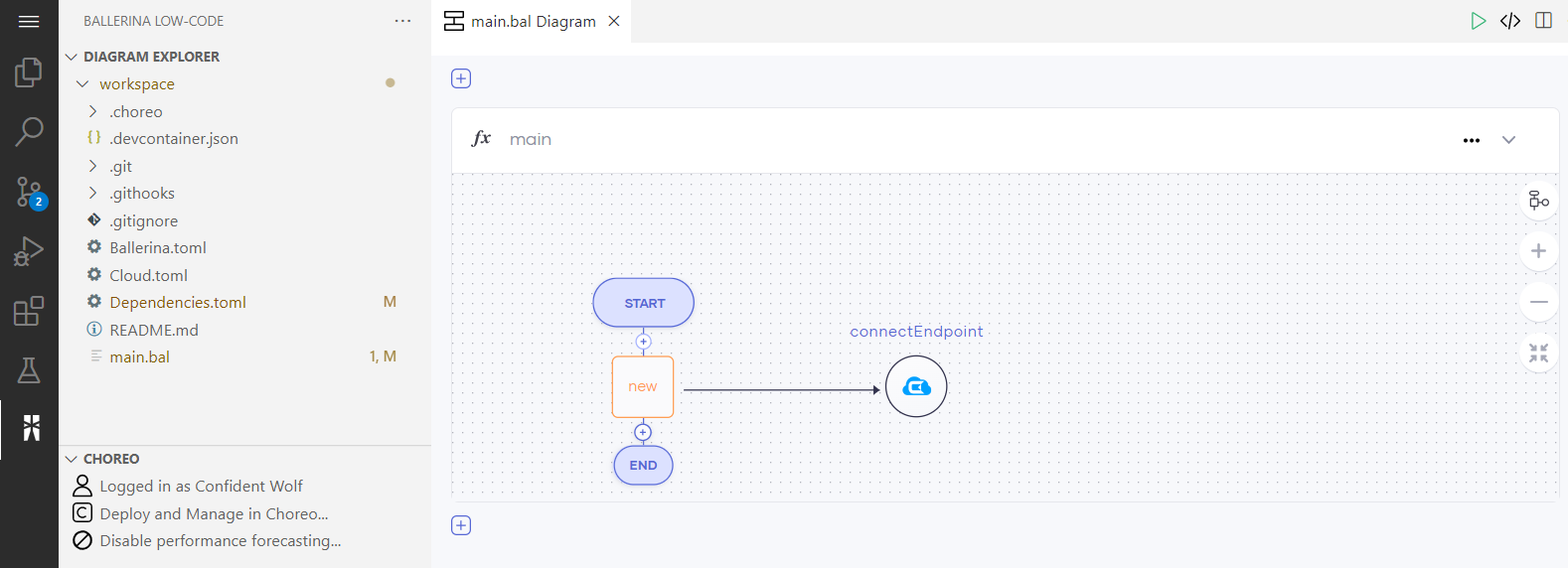
Adding a Query Action
- Click the + icon between the new and end shapes, select Action, and then select our existing connector endpoint.
- Select query for the connector Operation. There is now an Action pane on the right.
- Enter a SQL query to retrieve Zuora data as the sqlQuery parameter for the query. For example:
SELECT * FROM Zuora1.Zuora.Invoices LIMIT 10- When writing the query, be sure to specify the Connection Name as the catalog and Data Source Name as the schema. For example, Zuora1.Zuora.
- These parameters appear on the Connections page of your CData Connect Cloud dashboard.
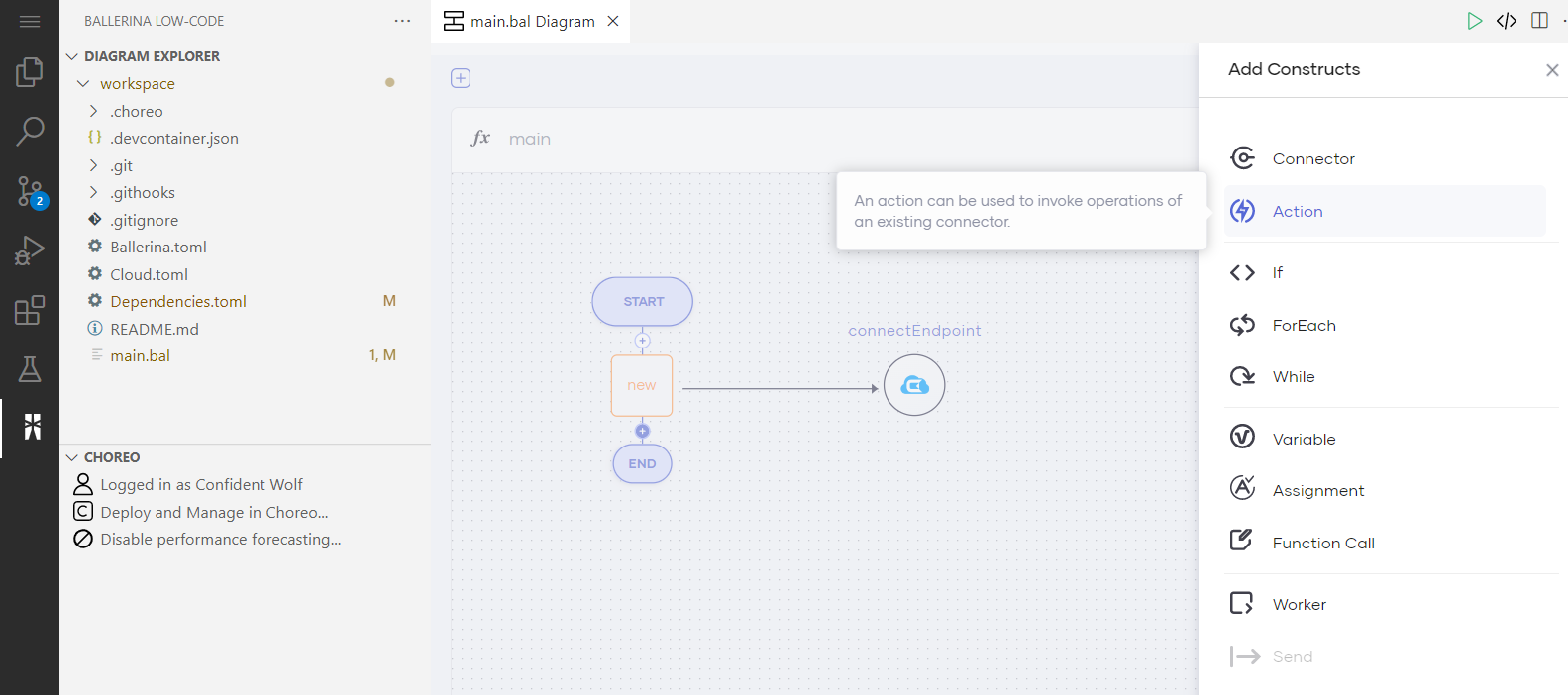
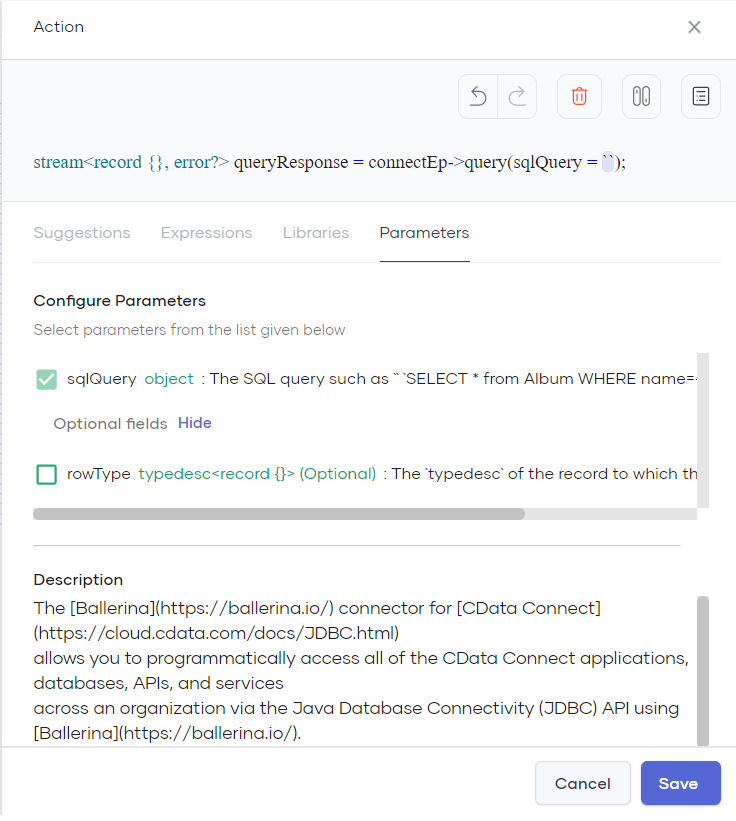
Iterating over Zuora Data
- Click the Show Source icon in the top right of the code editor.
- Add an import statment to import the ballerina/io library:
import ballerina/io;
- Next, add a from statement after the query action to iterate through the results of the SQL query:
- The code for the construct will now look similar to this:
- Click Save to save the action. The diagram should now look similar to this:
check from record{} result in resultStream
do {
io:println("Full Invoices details: ", result);
};
import ballerinax/cdata.connect;
import ballerinax/cdata.connect.driver as _;
import ballerina/io;
public function main() returns error? {
connect:Client connectEp = check new (user = "connect_cloud_username", password="connect_cloud_pat");
stream<record {}, error=""?> resultStream =
connectEp->query(sqlQuery = `SELECT * FROM Zuora1.Zuora.Invoices LIMIT 10`);
check from record{} result in resultStream
do {
io:println("Full Invoices details: ", result);
};
}
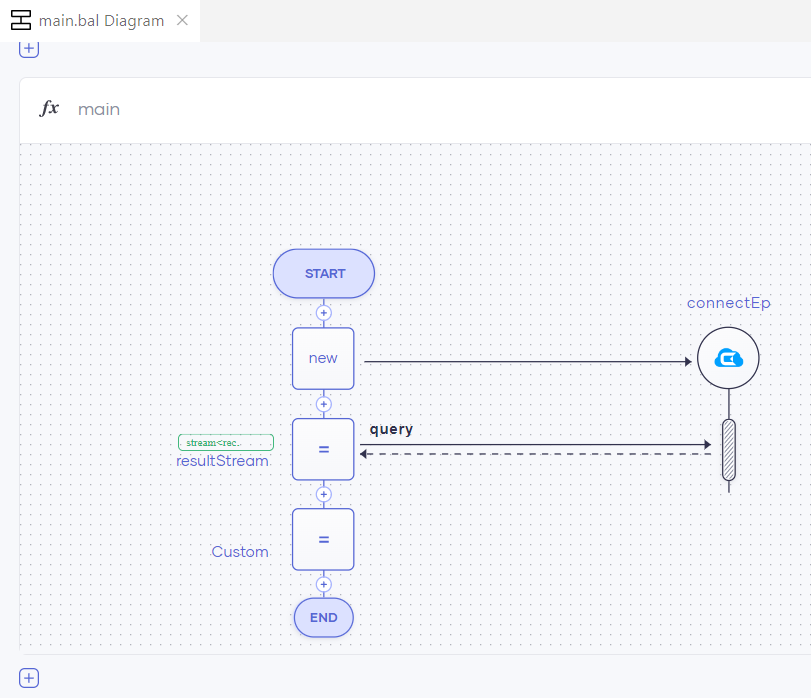
Deploying the Program
Once you have added all of your desired actions to your program, follow these steps:
- Commit and push your final source code in the web editor and sync those changes with the Choreo platform.
- Click Deploy in the left navigation bar of the Choreo Console.
- Under Build Area, click Configure & Deploy to deploy your program.
- When prompted, enter the same CData Connect Cloud username and password that you used earlier and click Deploy.
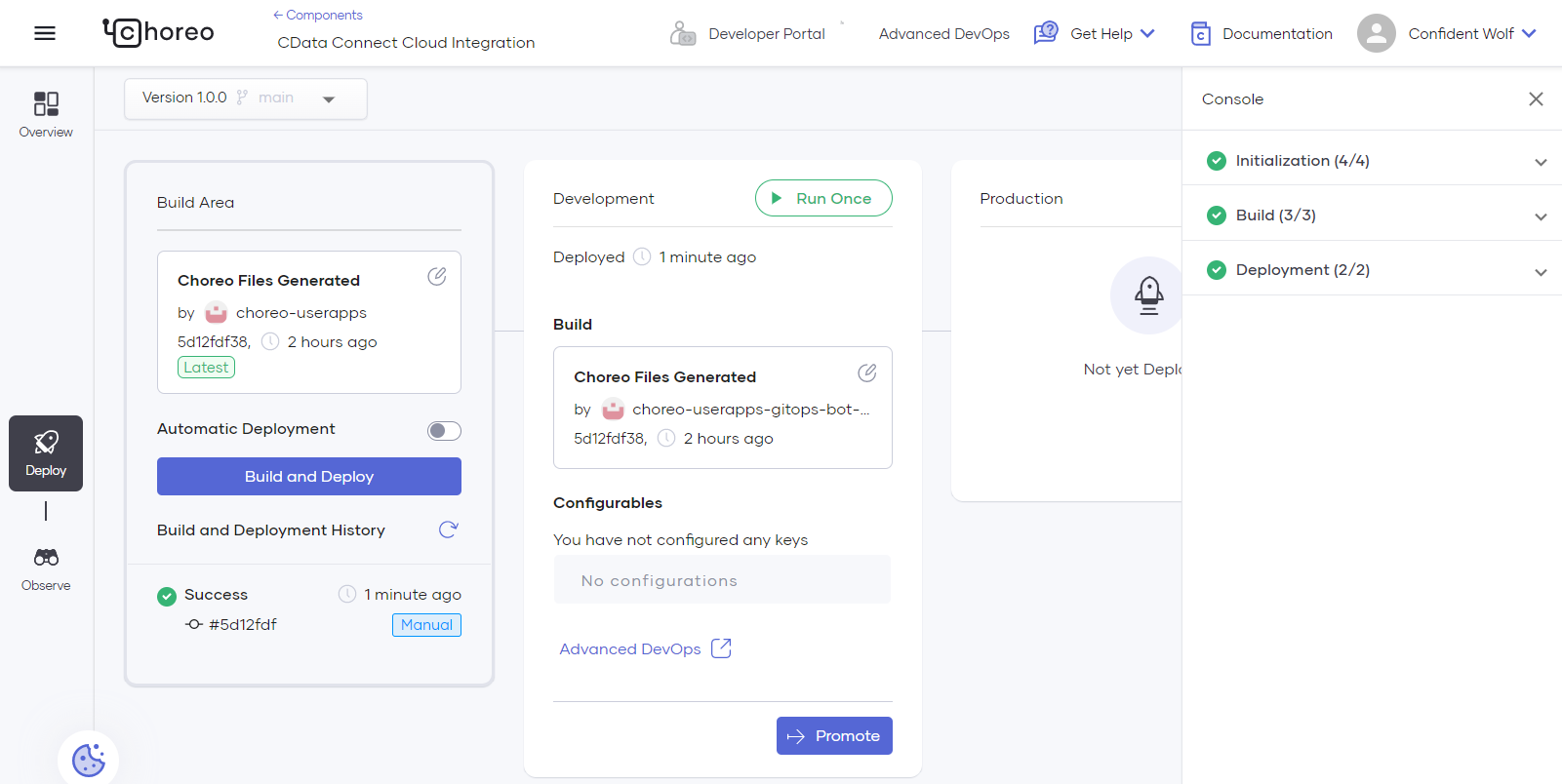
You have now created an application with access to live Zuora data in Choreo.
Get CData Connect Cloud
For more information about using Choreo with CData Connect Cloud, see the CData Connect Ballerina Guide. To get live data access to 100+ SaaS, Big Data, and NoSQL sources directly from your cloud applications, try CData Connect Cloud today!











